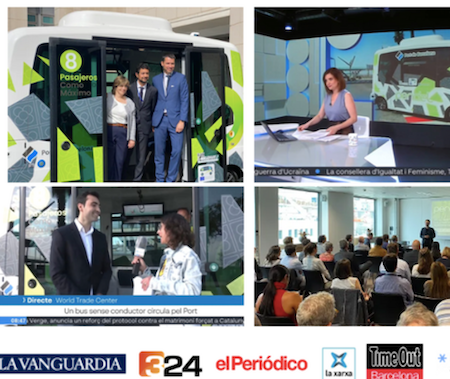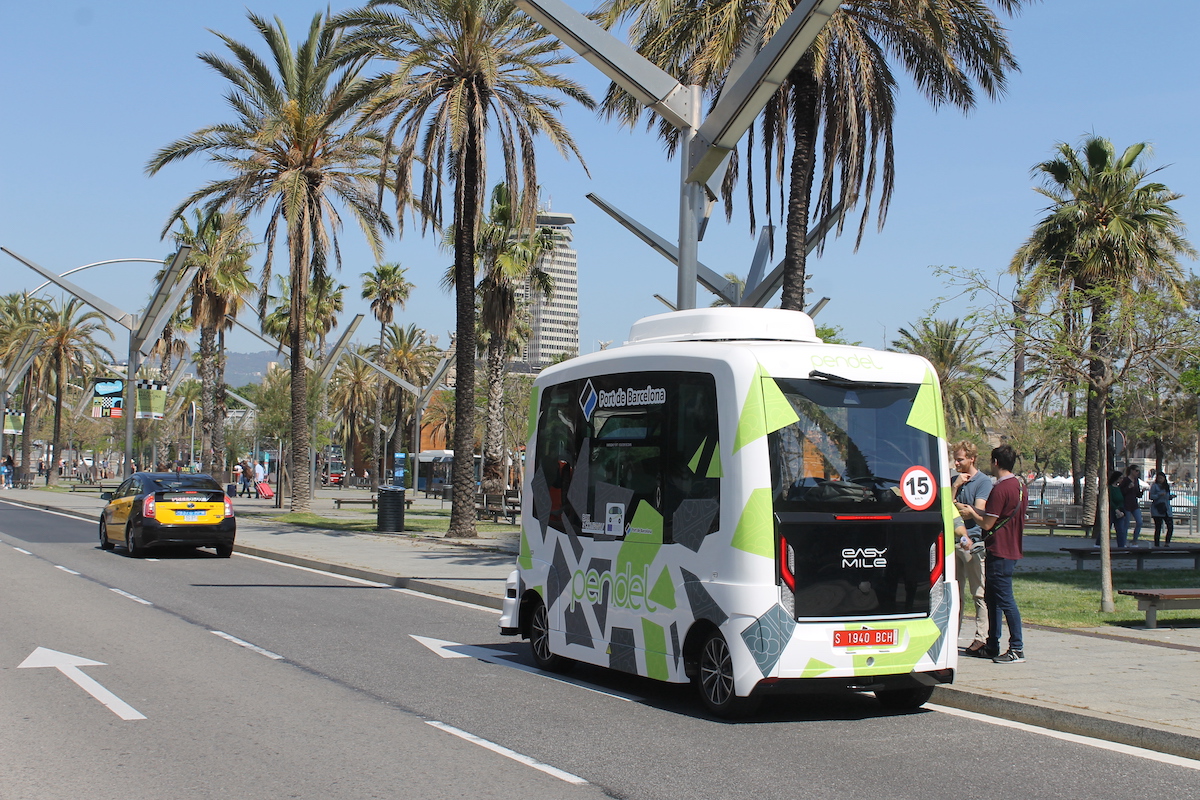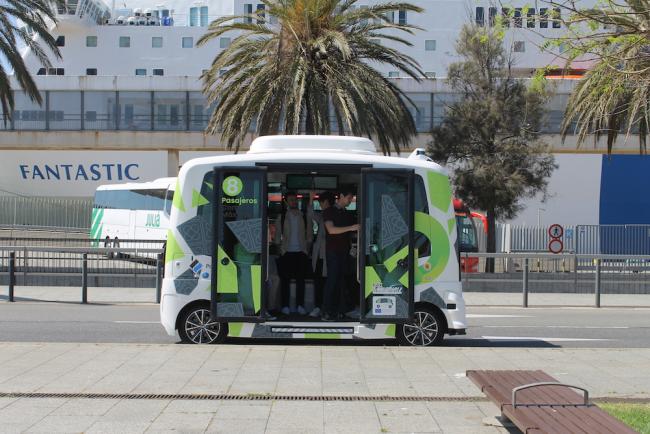Site operators and transport providers are already solving their transport problems with autonomous vehicles. In this article, Pendel Mobility shares 3 ready-to-deploy use cases drawing on their experience launching the first autonomous vehicle pilot in Barcelona.
On a sunny morning in May 2022, a bus drove itself to a bus stop in the Port of Barcelona.
Its doors slid open, passengers stepped in, and the bus pulled away, following a path determined weeks beforehand to be the safest and most efficient possible. This was the first trip performed by a non-human driver on a public Barcelona road since the era of horse-powered transport.
The milestone was reached during Pendel Mobility’s deployment of Barcelona’s first autonomous vehicle pilot. The pilot deployed an EasyMile autonomous shuttle to drive passengers across a complex stretch of the Port of Barcelona for four weeks, consistently and without collisions.
The event generated prominent online, TV and print media coverage. It also showed that autonomous shuttles are already prepared to be a valuable asset in a transport service provider's fleet.

Pendel’s recently published Insight Guide - which distils the pilot’s key learnings for site managers, private companies and public authorities - shares nine solutions that autonomous vehicles can already offer mobility managers.
Here are three of the most promising:
1. Reliable mobility connections for a business or innovation park
Site managers can increase the reliability and cost-effectiveness of their mobility solutions with an autonomous shuttle.
Pendel’s pilot showed that autonomous vehicles currently work best within enclosed spaces. The largest disruption to autonomous operations wasn’t from the shuttle itself. The most common hazard was aggressive overtaking by cars and taxis unwilling to share the road with our shuttle.
This wouldn’t be a problem in an enclosed site. Without interference from other road users, a manager could rely on an autonomous fleet to offer a smooth, safe ride connecting site buildings 24 hours a day.
Alongside operational benefits, the brand of a business or innovation park would benefit from the inclusion of a highly innovative mobility solution. The prominent media coverage the pilot received positioned the Port of Barcelona as an innovative public organization, and helped them to fulfil the objectives of their 2021-2024 Innovation Plan.
2. Safe and stress-free driverless transport for golf courses and holiday resorts
Unlike any other road user, an autonomous shuttle takes the safe pre-planned path on every single journey. This can be especially useful for private site owners that want to reduce the likelihood of human-caused driving accidents.
Imagine you run a golf course. Allowing unpredictable human drivers to roam freely on the golf course can be a source of accidents and disruption to your business. In the US alone, 18,000 accidents are caused by human-error golf buggy accidents every year, for example. An autonomous shuttle will never run this risk.
An autonomous vehicle can also improve the quality of a guest’s experience traveling around a site. Chauffeuring holidaymakers in an autonomous shuttle can cut the stress of driving on their holiday, providing a new level of service quality for sites that lack the resources to hire on-site drivers.
3. Making the last mile accessible to all
Automating the first and last mile is an effective way to connect the dots of a transport system to increase accessibility for all passengers.
In the Port of Barcelona our shuttle connected a car park to an office building for 300 employees around 20 minutes away. The vehicle was optimised for passengers with reduced mobility, meaning the Port could finally offer reduced-mobility employees a comfortable last-mile experience.
Deploying an autonomous last mile also benefits bus drivers. By automating a mundane back-and-forth route, providers can assign human drivers to more challenging, stimulating routes on the open road.
Pendel’s pilot in Barcelona was a new route not previously served by a transport solution. But its most recent pilot delivery in Hannover showed the potential for this better allocation of resources.
The Hannover pilot connected a stretch from a train station to a university campus. The mundane route was undesirable to drive during empty off-peak hours. The public transport provider even had to substitute drivers every 90 minutes and struggled to hire junior bus drivers to replace retiring drivers on the route.
By relieving bus drivers from the quiet hours and placing them on more complicated routes, the transport provider more effectively fulfilled its service city-wide while drivers benefitted from more stimulating work days.
Conclusion
Pendel’s experiences in the Port of Barcelona confirmed for us that the future of vehicle-based transport is autonomous. The vehicles are safe and effective, and the use cases are becoming clearer.
We believe the most promising immediate options are:
-
Reliably connecting buildings in a business park
-
Providing safe and stress-free transport experiences on private sites
-
Making the last mile accessible for all
For authorities and site operators to activate these use cases, they should do two things:
-
Make a roadmap for harnessing the potential value of autonomous vehicles
-
Try a low-cost pilot to understand the problems an autonomous vehicle could solve
Pendel’s insight report Deploying your First Autonomous Vehicle shares valuable insights to help you achieve both these goals. Read more here.



